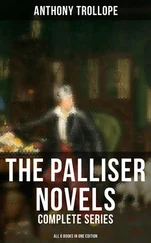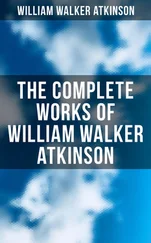Herzog gives us the orthodox view of the philosophy, in his “Religious Encyclopedia,” as follows:
“In religion, the typical Transcendentalist might be a sublimated theist; he was not, in any accepted sense, a Christian. He believed in no devil, in no hell, in no evil, in no dualism of any kind, in no spiritual authority, in no Savior, in no Church. He was humanitarian and an optimist. His faith had no backward look; its essence was aspiration, not contrition.”
This last quotation is particularly interesting, inasmuch as it proves the contention of the influence of Transcendentalism upon the modern philosophical and religious thought. Compare Herzog’s statements of what the Transcendentalist did not believe, and what he did believe, with the prevailing spirit of religio-philosophical thought, and see how the criticism of Transcendentalism becomes the prophecy of the popular thought of the early twentieth century! Surely this is a clear case of cause and effect.
About 1830, and the years immediately following, the various elements from which the Transcendental Movement was afterward composed began to approach each other, drawn together by the attraction of common interest. Emerson’s “Nature,” written in 1836, was an active element in the crystallization, although the writings of others had much to do with the amalgamation. These several books were so closely identified in their general philosophies and tendencies, that their readers began to form a loosely connected cult. Channing and Ripley, both prominent in Unitarianism and the “new thought” of the day, finally got together and formed a society for mutual endeavor and philosophical inquiry. Emerson, Margaret Fuller, Channing, Ripley, Brownson and Hedge, all prominent in the general movement, met and discussed the formation of a society. The term “Transcendentalism” was then first applied to the movement. Emerson says of this: “Nobody knows who first applied the name.” The society was first called “The Symposium” and afterward “The Transcendental Club.” Among the general subjects forming part of the earlier discussions were those of “Pantheism” and “Mysticism,” respectively. The interest in the movement grew rapidly, and many of the brightest minds in New England were attracted to it. While the subjects discussed, taught and considered were various, it is safe to say that as a whole they were most unorthodox and contrary to the general public belief and opinion. Many of the ideas and opinions so advanced are quite familiar to the people of the present day, and are taught in many pulpits, but at the time of the Transcendental Movement they were regarded as heretical and atheistic, and aroused the fiercest denunciation and antagonism from the orthodox pulpit and press.
The formation of the Brook Farm Community at West Roxbury, Mass., by George Ripley, in 1841, is a part of the history of Transcendentalism, for the reason that some of the leading lights in the latter movement became members of the new community. Men like Ripley, Hawthorne, Alcott, Curtis, Channing and Dana, and women like Margaret Fuller, added a brilliancy to the Brook Farm Community, which has given it a prominent place in the history of the general movement. The aim of the community, as stated by one of their number, was “more effectually to promote the great purposes of human culture, to establish the external relations of life on the basis of wisdom and purity.” The community flourished for a number of years, but like all such attempts, finally failed, the members dispersing, but carrying the spirit of the community with them in many directions.
In 1840, the publication of “The Dial” began. This was the organ of New England Transcendentalism, and naturally served to bring the movement into still more general notice and popularity. Margaret Fuller was the first editor, and Emerson, Channing, Alcott, Theodore Parker, Ripley, and Thoreau were among the contributors to the first number. Emerson wrote the opening article, entitled: “The Editors to the Reader.” During the first two years of the existence of “The Dial” Margaret Fuller was assisted in her editorial work by Ripley and Emerson. After that time Emerson became the sole editor. Much that was crude and fanciful appeared in the pages of this publication, but also much that will hold a permanent place in the history of American literature. It marked an era in the history of American magazines, and gave an impetus, the effects of which are still noticeable. Ater four years of struggle it was finally discontinued.
The life of the Transcendental Movement may be said to be embraced by the years 1830 and 1850, although the beginnings were still further back in the century, and the influence of the movement still lives as the heart and spirit of many modern schools of thought and activity which are slow to acknowledge their indebtedness to it. Its real source was the great awakening of nearly a century before its time, in which the hold of Calvinism was rudely shaken and weakened, and which brought to the New England mind a new interest in Arminianism and Arianism, and which served to prepare the cradle for Unitarianism, which was afterward born. Transcendentalism was the natural spiritual child of the great spiritual unrest which had preceded it by about a century, and which wrought a great change in religious and philosophical thought and ideals in New England, which section at that time undoubtedly was the intellectual center of this country. It was the offspring of liberal Christian thought, combined with Neo-Platonism, Oriental Religions, and Occult Philosophy. It was perhaps nearer akin to what philosophy calls “Mysticism” than to any other one form of thought.
The spirit of Transcendentalism was most elusive, as all writers have remarked. The current impression at the present time may be stated in a quotation from Professors McGilvery and Trent, in their article on the subject in the “New International Encyclopedia,” as follows:
“It is difficult to disengage the elements, to delimit it in point of time, to say what it really accomplished, to determine what it became.… The era of the Transcendentalists was in many respects an American Renaissance, the effects of which were not confined to this country, but were spread chiefly through the writings of Emerson, Thoreau and Channing, to England, and to some extent to the Continent of Europe. That their ideas were vague and often transcended reason, not to say common sense, that their literary work was largely amateurish, that their extravagances gave much occasion to legitimate ridicule, that their so-called movement was the forerunner of religious and social manias of all sorts , can scarcely be gainsaid; but it is equally idle to deny the loftiness of their aims and the importance of their work.”
Be one’s opinion of Transcendentalism what it may, no careful student of the Transcendental Movement can doubt the fact that in it may be found the underlying and immediate causes of the modern effects, manifested as the “New Thought” movement, on the one hand, and the tendency toward Monistic Idealism, or pantheism, evidenced in the philosophical thought of to-day, on the other hand. While it is true that the real causes of these later movements must be sought for still further back in the history of human thought, it cannot be doubted that the older impulses reached the present movements through the direct channel of the Transcendentalism of New England. An examination of the teachings and writings of that school, when compared with those of the later schools, shows a direct chain or sequence and of cause and effect. Those who are looking for the causes of the modern schools of thought will fail to find them unless they take into active consideration the Transcendental Movement of New England, of 1830–1850. And not only is this true, but it will be found that many other and apparently unrelated schools of thought arose about the same time, not entirely in sympathy with the general movement, but apparently arising from the influence thereof. Some of these side schools have their modern successors, tracing descent in a direct line. So that the influence of Transcendentalism in New England may be considered the one vital factor which has brought about that state of affairs which has resulted in the old conceptions sounding “as odd to most of us as if it were some outlandish savage religion,” as Professor James has said; and in making possible the statement of the same careful authority that “the only opinion quite worthy of arresting our attention will fall within the general scope of what may roughly be called the pantheistic field of vision, the vision of God as the indwelling divine, rather than the external creator, and of human life as part and parcel of that great reality.” Transcendentalism is the direct and immediate cause of this state of affairs. And Ralph Waldo Emerson is recognized as the fullest and clearest expression of Transcendentalism. As the orthodox speaker previously quoted said: “Emerson is the fellow who is at the bottom of all this trouble.” Then let us see what Emerson really taught, and what he stood for. This will help to show us the connection between 1830–1850 and 1909.
Читать дальше












